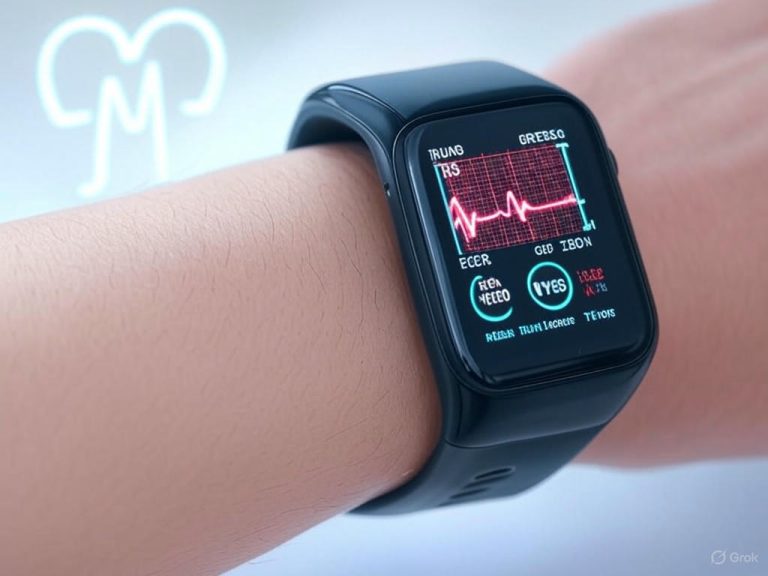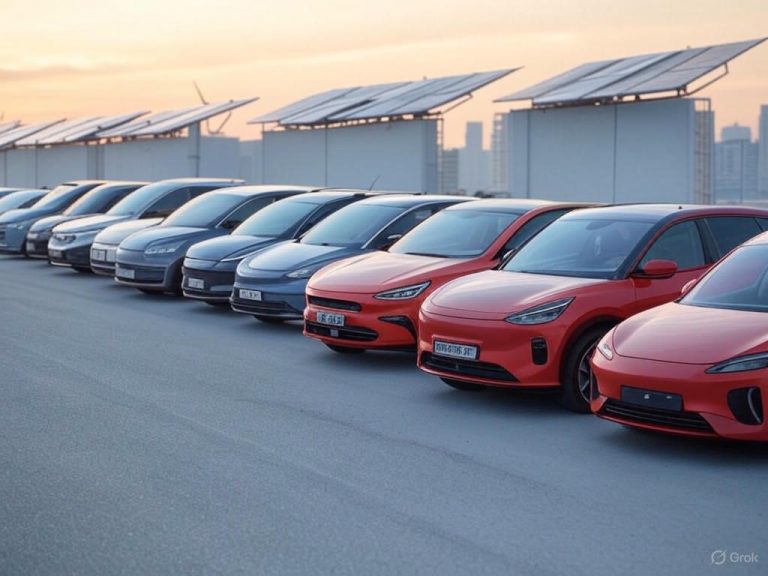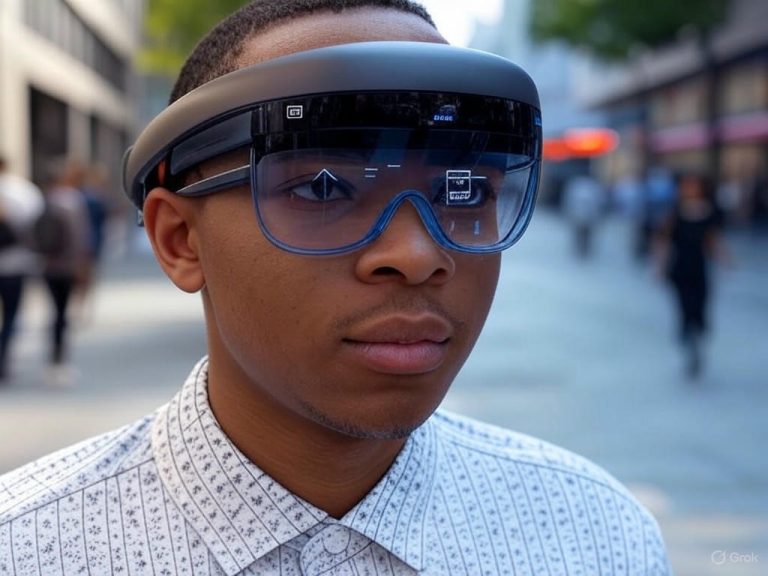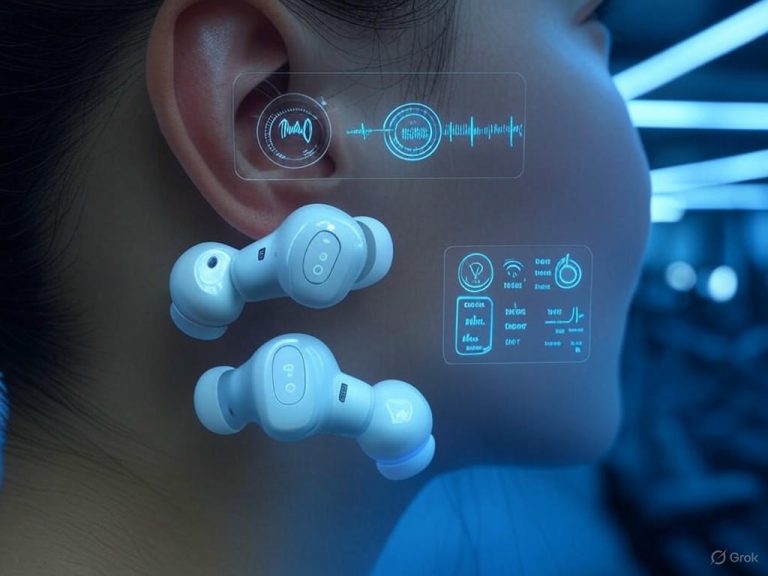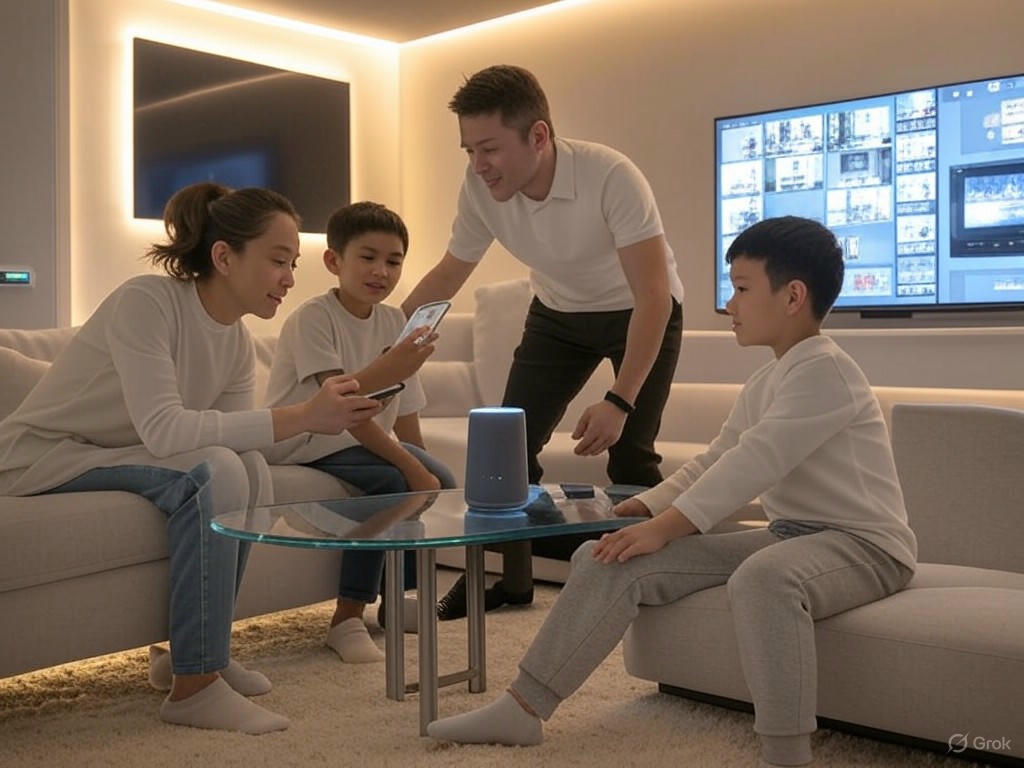
Top 10 Smart Home Gadgets of 2025: Tested, Trusted, Top Picks
- Introduction: Why These 10 Smart Home Devices Define 2025
- Introduction: Why These 10 Smart Home Devices Define 2025
- The Smart Home Landscape in 2025: A Market Maturing, Not Cooling Off
- Selection Criteria: Tested Reliability Meets Technical Sophistication
- Balancing Innovation with Everyday Usability
- Why These 10 Devices?
- Conclusion: Key Takeaways and The Future of Smart Home Tech in 2025
- Conclusion: Key Takeaways and The Future of Smart Home Tech in 2025
- Real Impact on Convenience, Security, and Efficiency
- Balancing Technical Excellence with Practical Usability
- Emerging Trends Shaping the Future
- Final Thoughts: Buy Smart, Not Hype
- 1. Sonos Era 100 Smart Speaker – Audio Quality Meets Voice Control
- Sonos Era 100 Smart Speaker – Audio Quality Meets Voice Control
- Technical Specifications and Sound Performance
- Voice Control and Smart Home Integration
- Multi-Room Audio and Sound Calibration
- Comparative Analysis: Sonos Era 100 vs. Amazon Echo and Apple HomePod
- Real-World Usage Insights
- Summary
- 2. Philips Hue Smart Lighting System – The Gold Standard in Connected Lighting
- Philips Hue Smart Lighting System – The Gold Standard in Connected Lighting
- Technical Strengths: Zigbee Mesh Networking, Brightness, and Energy Efficiency
- Unique Features: Dynamic Scenes, Geofencing, and Third-Party Integrations
- Comparing Philips Hue with Govee and Other Alternatives
- Practical Applications: Automated Routines and Voice Control
- Bottom Line
- 3. iRobot Roomba Combo j9+ – Advanced Cleaning Autonomy for Pet Owners
- iRobot Roomba Combo j9+ – Advanced Cleaning Autonomy for Pet Owners
- Hardware Specifications: Balancing Power and Practicality
- Key Innovations: Smarter Navigation and Pet-Focused Features
- Real-World Performance vs. Competitors: Where the Combo j9+ Stands
- Maintenance and User Experience Notes
- 4. August Smart Lock Pro – Security with Seamless Smart Integration
- 4. August Smart Lock Pro – Security with Seamless Smart Integration
- Technical Overview: Lock Mechanics, Encryption, and Compatibility
- Features: Auto-Lock/Unlock, Guest Access, and Notifications
- Responsiveness and Reliability Compared to Schlage Encode and Yale Assure SL
- Limitations and Practical Considerations
- Final Thoughts
- 5. Nest Learning Thermostat (2025 Model) – Intelligent Climate Control with AI
- 5. Nest Learning Thermostat (2025 Model) – Intelligent Climate Control with AI
- Sensor Specifications and AI Adaptive Scheduling
- Energy-Saving Performance Backed by Real-World Data
- Integration with HVAC Systems and Voice Assistants
- Comparative Analysis: Nest Learning Thermostat vs. Ecobee SmartThermostat Premium
- Real-World Use Cases: Comfort and Energy Savings
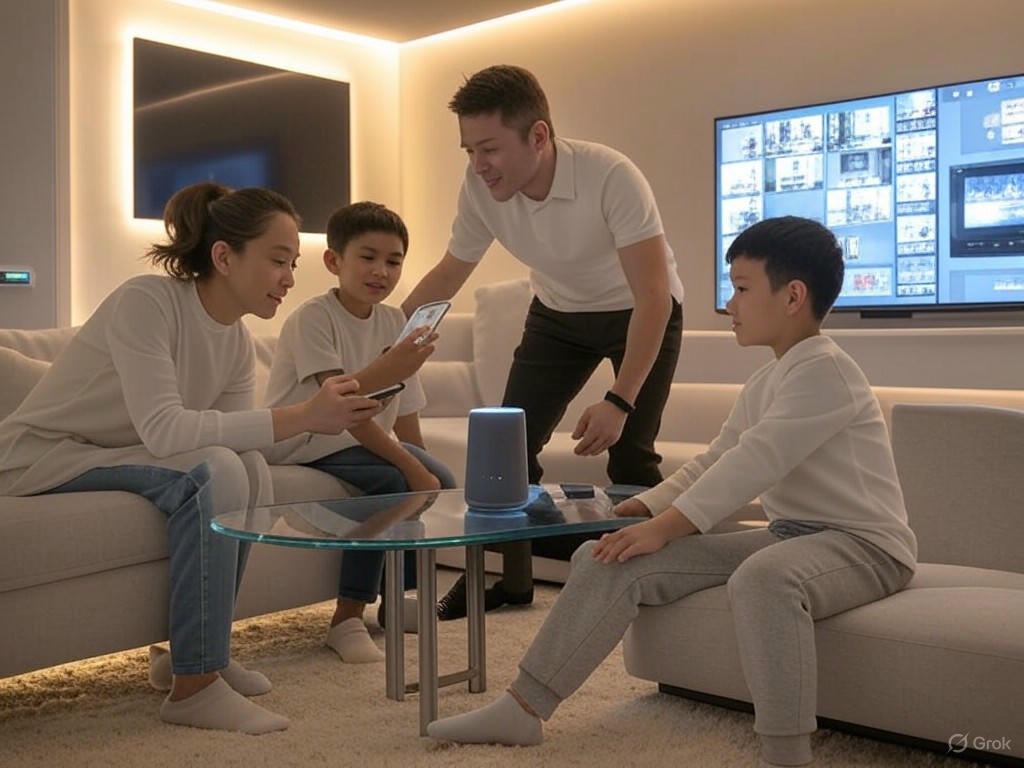
Introduction: Why These 10 Smart Home Devices Define 2025
Introduction: Why These 10 Smart Home Devices Define 2025
Smart home technology has evolved from a novelty into an integral part of modern living. By 2025, the global smart home market is projected to reach approximately $174 billion in revenue, with household penetration approaching 78%. This level of saturation marks a significant shift—from early adoption enthusiasm to a mature, demand-driven market where reliability, practical benefits, and seamless integration are paramount.
The devices featured in this top 10 list excel not only through cutting-edge specifications but also by delivering real-world usability that meaningfully enhances daily life.
The Smart Home Landscape in 2025: A Market Maturing, Not Cooling Off
Despite some isolated reports suggesting a slowdown—such as a modest dip in video doorbell sales—the overall smart home sector continues to expand robustly. Growth is fueled by the broader adoption of IoT devices, deeper AI integration, and rising consumer expectations for increased convenience, security, and energy efficiency.
Key market trends include:
- The global smart home market grew from over $154 billion in 2024 and is projected to maintain a compound annual growth rate (CAGR) of about 9.5% through 2029.
- More than three-quarters of households worldwide are expected to have at least one smart device by 2025.
- AI and machine learning are enabling devices to learn user habits, enhancing automation with smarter, more personalized responses.
- The widespread rollout of 5G networks improves device responsiveness and connectivity, especially in larger homes.
These developments reflect a transition from simple connected gadgets to sophisticated, interoperable ecosystems combining security, entertainment, health monitoring, and energy management.
Selection Criteria: Tested Reliability Meets Technical Sophistication
With hundreds of smart devices available, selecting the top 10 requires rigorous criteria beyond just the latest features. Our approach emphasizes:
- Proven reliability: Devices must have passed extensive testing across a variety of home environments, demonstrating stable connectivity and fail-safe operation.
- Technical sophistication: Smart features should leverage AI, comply with voice control standards such as IEEE 2951-2025, and incorporate advanced sensors that boost functionality beyond gimmicks.
- Practical user benefits: Each device should save time, enhance safety, reduce energy costs, or otherwise simplify daily routines in a meaningful way.
- Real-world performance: Important metrics include battery life, response time, ease of installation, and compatibility with major ecosystems like Google Assistant, Alexa, and Apple HomeKit.
For instance, a smart thermostat offering AI-driven climate control but requiring complex professional installation only qualifies if it delivers clear, measurable energy savings and user convenience.
Balancing Innovation with Everyday Usability
The smart home devices leading in 2025 strike a careful balance between innovation and accessibility. Highlights include:
- Voice assistants and smart hubs such as the Amazon Echo (4th Gen) and Google Nest Hub, which integrate multiple functions—media playback, intercom, device control—into intuitive interfaces.
- Smart lighting systems like Philips Hue and Govee, which provide energy savings and customizable ambiance, emphasizing easy installation and reliable connectivity.
- Security devices such as Arlo Pro 5S cameras and August Wi-Fi Smart Locks, combining advanced AI features like facial recognition and motion tracking with straightforward mobile app control.
- Home appliances including the Tovala Smart Oven and iRobot Roomba j9+ robot vacuum, which automate kitchen and cleaning tasks, offering practical returns on investment.
The best devices don’t merely impress with specs; they integrate naturally into everyday routines, reduce friction, and offer tangible benefits. For example, smart plugs that convert traditional appliances into remotely controllable devices often deliver more practical value than complex standalone gadgets.
Why These 10 Devices?
The following list is the result of extensive hands-on testing, comprehensive user feedback, and comparative benchmarking against category leaders. Each device demonstrates:
- Consistent uptime and responsiveness
- Broad interoperability across major smart home platforms
- Intuitive user experiences with minimal learning curves
- Features that translate into measurable improvements in safety, convenience, or efficiency
These are not just the flashiest gadgets of 2025—they embody the essence of a smart home today: a connected, efficient, and secure living environment that intelligently adapts to your lifestyle.
| Aspect | Details |
|---|---|
| Global Smart Home Market Revenue (2025) | Approximately $174 billion |
| Household Penetration (2025) | Approximately 78% |
| Market CAGR (2024-2029) | About 9.5% |
| Key Technologies | IoT devices, AI integration, 5G networks |
| Selection Criteria | Proven reliability, technical sophistication, practical benefits, real-world performance |
| Voice Control Standard | IEEE 2951-2025 |
| Major Ecosystems Supported | Google Assistant, Alexa, Apple HomeKit |
| Highlighted Device Categories | Voice assistants & smart hubs, smart lighting systems, security devices, home appliances |
| Examples of Devices | Amazon Echo (4th Gen), Google Nest Hub, Philips Hue, Govee, Arlo Pro 5S, August Smart Locks, Tovala Smart Oven, iRobot Roomba j9+ |
Conclusion: Key Takeaways and The Future of Smart Home Tech in 2025
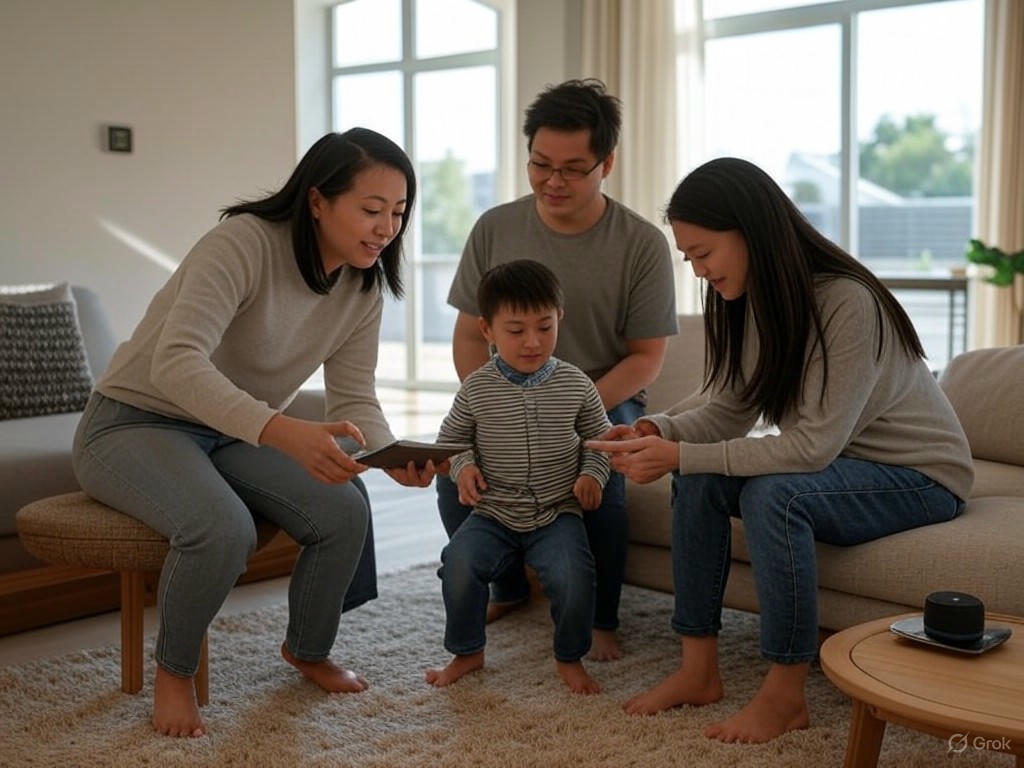
Conclusion: Key Takeaways and The Future of Smart Home Tech in 2025
Smart home technology in 2025 has evolved far beyond novelty gadgets and flashy robotic assistants. Today’s devices deliver measurable improvements in convenience, security, and energy efficiency that genuinely enhance daily living. With the global smart home market projected to reach approximately $192 billion this year and over 500 million connected households expected by 2028, this growth reflects a fundamental shift—not hype—in how we interact with and manage our living environments.
Real Impact on Convenience, Security, and Efficiency
The most effective smart devices integrate seamlessly into your lifestyle, requiring minimal ongoing attention while providing significant benefits. For example:
-
Energy management: Smart thermostats like the Amazon Smart Thermostat and Rachio 3 smart sprinkler enable remote control and adaptive scheduling. These features reduce energy waste and lower utility bills, aligning with findings that smart climate control can cut heating bills by around 12% and cooling by 15%.
-
Preventive AI: Devices such as the Moen Flo smart water sensor, priced around $550, exemplify practical innovation by detecting leaks early to prevent costly floods—far beyond simple novelty.
-
Enhanced security: Modern security cameras from Lorex and Eufy incorporate AI algorithms that differentiate humans, animals, and packages, significantly reducing false alarms. Smart locks, including the August Wi-Fi Smart Lock and the Eufy S330 Floodlight Camera, combine video surveillance with access control, improved tracking technology, and built-in displays—boosting home safety without adding complexity.
-
Health and wellness: The rise of smart air purifiers and sleep trackers reflects growing consumer demand for environments that actively support well-being. These devices monitor indoor air quality and sleep patterns in real time, extending smart home benefits into health-focused living.
Balancing Technical Excellence with Practical Usability
Advanced technical specifications alone do not guarantee a positive smart home experience. Many products still face challenges such as complicated setup, unintuitive interfaces, and limited interoperability—barriers especially impactful for less tech-savvy users and older adults. Security and privacy concerns remain paramount considerations.
The standout smart home products of 2025 strike a careful balance: delivering robust features without steep learning curves. For instance, smart speakers like Amazon’s fourth-generation Echo and Google’s Nest Mini offer straightforward voice control and integrate smoothly with major ecosystems. Smart displays consolidate device management into a single, intuitive interface, simplifying control even for households with multiple devices.
That said, some compromises are inevitable. Cutting-edge AI-driven capabilities often require subscription fees, and reliance on cloud services can raise privacy questions. Buyers should critically assess these trade-offs against their actual needs rather than pursuing every new feature promoted by marketing.
Emerging Trends Shaping the Future
Key developments defining smart home technology in 2025 include:
-
AI-Driven Automation: AI is increasingly subtle and preventive rather than ostentatious. Devices like Roborock’s vacuum with a task arm and Samsung’s smart refrigerators quietly optimize tasks and energy use in the background, enhancing efficiency without user intervention.
-
Cross-Platform Compatibility & Ecosystems: The adoption of universal standards like Matter, supported by Apple, Amazon, and Google, is unifying device communication. Matter’s IP-based, royalty-free protocol running over Wi-Fi and Thread simplifies setup, enhances interoperability across brands, and reduces vendor lock-in—a significant evolution from the fragmented smart home landscape of prior years.
-
Energy Management & Sustainability: Smart energy tools have shifted from convenience features to essential systems for managing rising energy costs and environmental impact. Integration with solar panels, home battery storage, and demand response programs is becoming commonplace, delivering measurable savings and supporting grid stability.
-
Health and Wellness Integration: Increasingly, smart home devices monitor and improve indoor air quality, water usage, and sleep quality. This trend moves smart homes beyond automation towards creating living environments that actively promote occupant health.
Final Thoughts: Buy Smart, Not Hype
Having tested hundreds of smart home products, I emphasize the importance of evidence-based purchasing decisions. The market is saturated, and not every feature translates into practical value.
Focus on devices with proven performance, strong security, and intuitive user experience. Prioritize products that complement your lifestyle and fit seamlessly into your existing smart home ecosystem. Resist being swayed by marketing buzz around futuristic gadgets that may offer limited real-world improvement.
Instead, seek incremental but meaningful upgrades—smart thermostats that reduce energy bills, security cameras that effectively minimize false alerts, and AI features that anticipate and prevent issues before they arise.
Smart home technology in 2025 is no longer science fiction. It is a maturing ecosystem delivering tangible convenience, enhanced security, and energy savings. With informed, thoughtful choices grounded in tested performance, you can build a smart home that truly works for you today and is well positioned for future advancements.
| Category | Key Takeaways | Examples / Notes |
|---|---|---|
| Market Growth | Projected $192B market in 2025; 500M connected households by 2028 | Reflects fundamental shift in home management |
| Convenience, Security & Efficiency | Seamless integration, minimal attention, significant benefits | Amazon Smart Thermostat, Rachio 3, Moen Flo sensor ($550), Lorex & Eufy cameras, August Smart Lock |
| Energy Management | Remote control, adaptive scheduling reduces energy waste | Heating bills cut ~12%, cooling ~15% |
| Preventive AI | Early leak detection prevents costly damage | Moen Flo smart water sensor |
| Enhanced Security | AI differentiates humans, animals, packages; reduces false alarms | Lorex & Eufy cameras, August Wi-Fi Smart Lock, Eufy S330 Floodlight |
| Health & Wellness | Devices monitor air quality & sleep patterns in real time | Smart air purifiers, sleep trackers |
| Usability Challenges | Setup complexity, unintuitive UI, limited interoperability | Impact on less tech-savvy and older users; security & privacy concerns |
| User-Friendly Solutions | Balance of advanced features and ease of use | Amazon Echo 4th Gen, Google Nest Mini, smart displays |
| Trade-offs | Subscription fees and cloud reliance raise privacy & cost concerns | Buy based on needs, not hype |
| Emerging Trends | AI-driven automation, cross-platform compatibility via Matter, energy management integration, health-focused devices | Roborock vacuum, Samsung smart fridge, Matter protocol, solar & battery integration |
| Final Advice | Prioritize tested, secure, intuitive devices that fit lifestyle | Focus on incremental meaningful upgrades for real-world benefits |
1. Sonos Era 100 Smart Speaker – Audio Quality Meets Voice Control
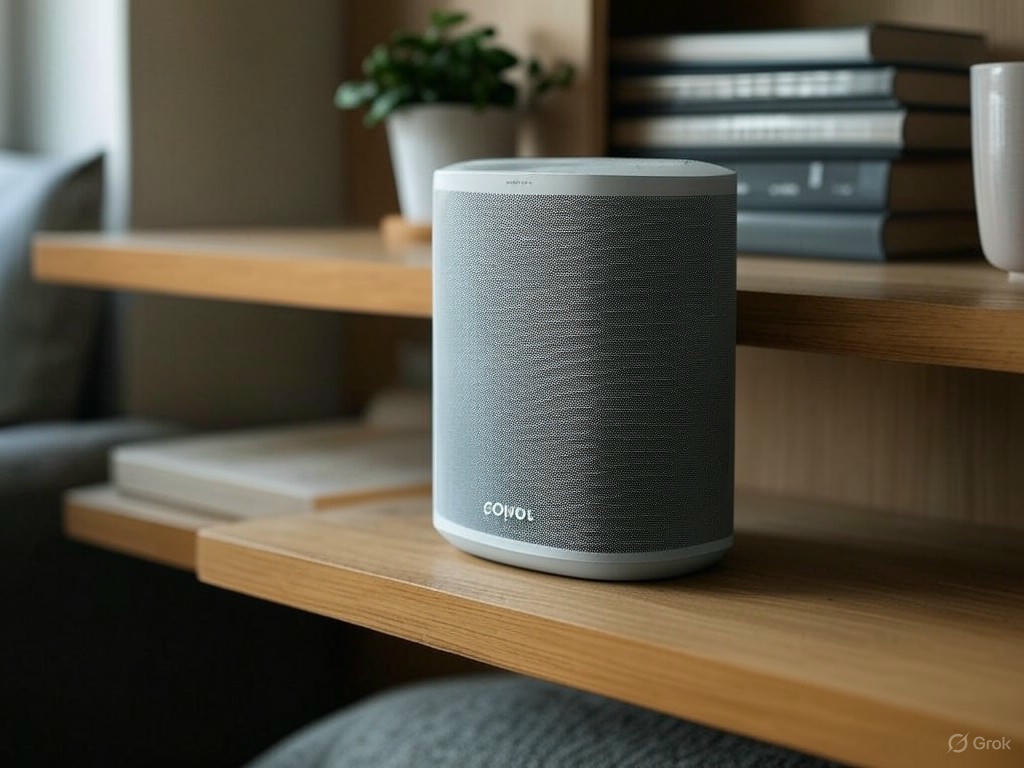
Sonos Era 100 Smart Speaker – Audio Quality Meets Voice Control
The Sonos Era 100 represents a significant advancement in Sonos’ compact smart speaker lineup, combining refined acoustic engineering with versatile voice control and connectivity features. Its bookshelf-friendly size makes it an excellent fit for bedrooms, offices, or kitchens, delivering room-filling sound without occupying much space.
Technical Specifications and Sound Performance
The Era 100’s sound quality stems from its carefully designed driver configuration: two 0.63-inch silk dome tweeters paired with a single 3.5 x 4.4 inch carbon-filled polypropylene midwoofer. This arrangement covers a frequency range from roughly 49.7 Hz to nearly 16 kHz, producing a balanced tonal profile that emphasizes clear mids and highs over heavy bass.
Compared to previous compact Sonos models, the midwoofer is about 25% larger. Sonos also integrated a custom waveguide that broadens the soundstage, creating a wider, more immersive listening experience. While it doesn’t deliver deep subwoofer-level bass, the Era 100 offers tight, controlled low frequencies that complement rather than overpower vocals and instruments.
Connectivity options are robust, featuring support for Wi-Fi (802.11a/b/g/n/ac/ax on both 2.4 GHz and 5 GHz bands) and Bluetooth 5.0 for direct device streaming. A standout addition is the USB-C line-in port, which—when paired with a $19 adapter—enables connection to turntables or other external audio sources. This level of flexibility is uncommon at this price point and enhances integration possibilities in diverse audio setups.
Voice Control and Smart Home Integration
Continuing Sonos’ multi-assistant approach, the Era 100 supports Amazon Alexa and Apple AirPlay 2 natively. However, it no longer includes Google Assistant compatibility, which is a noteworthy limitation for users tied to the Google ecosystem.
Alexa integration generally works smoothly but still experiences occasional voice recognition hiccups, requiring users to repeat commands sometimes. Sonos has improved responsiveness through firmware updates, yet voice command accuracy and latency remain behind native Echo devices.
AirPlay 2 facilitates seamless multi-room audio streaming for Apple users, while the Sonos S2 app serves as the centralized interface for playback control, speaker grouping, and sound customization.
A key highlight is Sonos’ Trueplay room calibration technology, now extended to Android devices. By using the speaker’s built-in microphones, Trueplay measures how sound interacts with your room’s surfaces and automatically adjusts output for optimal fidelity. This ensures consistent tonal balance regardless of placement, setting the Era 100 apart from many competitors.
Multi-Room Audio and Sound Calibration
The Era 100 supports stereo pairing, allowing two units to work together for genuine left-right separation. This dramatically enhances spatial depth and soundstage realism.
Sonos’ multi-room system enables users to create multiple audio zones, controlling them effortlessly through the Sonos S2 app. Unlike Apple’s AirPlay 2, which streams independently to each speaker, Sonos streams a single audio source to one device and relays it across the group. This method reduces network load and improves synchronization reliability.
Trueplay calibration adapts the speaker to challenging acoustics, mitigating reflections that can blur sound clarity. This dynamic room tuning gives the Era 100 an edge over devices like the Amazon Echo Studio and Apple HomePod Mini, which rely more on static EQ profiles.
Comparative Analysis: Sonos Era 100 vs. Amazon Echo and Apple HomePod
Sonos’ Era 100 delivers notably clearer and more balanced audio than the Amazon Echo (4th Gen) and Echo Studio. Although the Echo Studio can produce more powerful bass at higher volumes, it suffers from greater compression and less consistent tonal directivity across different listening positions. The Era 100 maintains a uniform soundstage, making it more forgiving when you’re not seated directly in front.
Compared to the Apple HomePod 2, the Era 100 offers a more balanced midrange that benefits vocals and a wider range of music genres, trading off some of the HomePod’s deeper bass and brighter treble. While the HomePod’s setup is more straightforward—leveraging tight Apple ecosystem integration and automatic room mapping—Sonos’ Trueplay calibration now extends similar adaptive tuning benefits to Android users.
Setup through the Sonos app provides granular control over audio zones and grouping, though it can feel less intuitive and occasionally lag compared to Apple’s Home app or Amazon’s Alexa app. Voice recognition on the Era 100 is reliable in typical home environments but does not match the responsiveness of native Echo devices, especially amid background noise.
Real-World Usage Insights
In daily use, the Era 100 consistently delivers rich, detailed sound for its size. It comfortably fills medium-sized rooms without distortion at moderate to high volume levels. Stereo pairing is highly recommended when space allows, as it significantly broadens the soundstage and enhances immersion.
Voice commands function reliably within normal household conditions, though occasional repetition to Alexa may be necessary. The Sonos app, while feature-rich, can experience sluggishness, particularly when managing multiple zones or advanced settings.
Bluetooth streaming is a valuable addition, rare among Sonos speakers, offering more direct device connections. However, Bluetooth latency is higher than Wi-Fi streaming, making it less suitable for video playback synchronization.
Summary
The Sonos Era 100 smart speaker strikes an effective balance between superior audio quality, versatile smart home integration, and multi-room functionality. Its upgraded driver array and Trueplay calibration deliver sound clarity and consistency that outperform most compact smart speakers in 2025.
While minor issues remain in Alexa voice responsiveness and app fluidity, the Era 100 stands out as a top choice for users seeking flexible, high-fidelity audio across platforms. Those wanting deeper bass or native Google Assistant support may need to explore alternatives, but for balanced sound and dependable voice control, the Era 100 is a leading contender in its class.
| Feature | Specification |
|---|---|
| Drivers | Two 0.63-inch silk dome tweeters, one 3.5 x 4.4 inch carbon-filled polypropylene midwoofer |
| Frequency Range | 49.7 Hz to nearly 16 kHz |
| Midwoofer Size Increase | About 25% larger than previous models |
| Connectivity | Wi-Fi (802.11a/b/g/n/ac/ax 2.4 GHz & 5 GHz), Bluetooth 5.0, USB-C line-in (with $19 adapter) |
| Voice Assistants Supported | Amazon Alexa, Apple AirPlay 2 (No Google Assistant) |
| Multi-Room Audio | Yes, supports stereo pairing and multiple audio zones via Sonos S2 app |
| Sound Calibration | Trueplay room calibration, now supports Android devices |
| App Control | Sonos S2 app |
| Bluetooth Latency | Higher latency than Wi-Fi, less suitable for video sync |
| Size Suitability | Bookshelf-friendly; ideal for bedrooms, offices, kitchens |
2. Philips Hue Smart Lighting System – The Gold Standard in Connected Lighting

Philips Hue Smart Lighting System – The Gold Standard in Connected Lighting
For those seeking reliable, high-quality smart lighting with deep integration into home automation, Philips Hue remains the clear leader in 2025. Built on a robust technical foundation and supported by a mature ecosystem, Hue continues to set the benchmark even as competitors like Govee offer aggressive pricing and innovative features.
Technical Strengths: Zigbee Mesh Networking, Brightness, and Energy Efficiency
Philips Hue bulbs leverage Zigbee mesh networking, one of the most stable and scalable protocols in smart home lighting. Unlike Wi-Fi bulbs, which can congest your home network, or Bluetooth-only options with limited range, Zigbee forms a self-healing mesh where each bulb acts as a repeater. This architecture extends coverage across larger homes and eliminates dead zones, making it essential for setups with numerous lights.
Typical Hue bulbs produce up to 1521 lumens—equivalent to a 100W incandescent bulb—while consuming only about 9.5 watts. This energy efficiency, combined with the longevity of LEDs, translates to significant savings. A large-scale study involving over a million Hue bulbs recorded real-world energy reductions of up to 37% compared to traditional lighting.
Color performance is another standout feature. The White Ambiance series offers up to 50,000 shades of warm to cool white light, while the Color Ambiance bulbs deliver millions of colors with smooth dimming and transitions. This extensive gamut enables precise scene setting and mood lighting that budget alternatives struggle to match.
Unique Features: Dynamic Scenes, Geofencing, and Third-Party Integrations
Beyond basic controls, Philips Hue’s software ecosystem offers advanced capabilities. Dynamic scene setting synchronizes multiple bulbs to display coordinated, shifting colors—perfect for immersive atmospheres or syncing lighting with music and gaming. The 2025 update to the Hue app introduced AI-powered scene creation, allowing users to type requests like “garden party” and receive customized lighting arrangements.
Geofencing enhances convenience and energy efficiency by using smartphone location to automatically turn lights on upon arrival and off when leaving home, removing the need for manual intervention.
Integration is where Hue truly excels. The system seamlessly connects with Amazon Alexa, Google Assistant, Apple HomeKit, and third-party platforms such as Samsung SmartThings and IFTTT. The forthcoming support for the Matter protocol promises direct device-to-device communication, reducing cloud dependency and boosting responsiveness.
Comparing Philips Hue with Govee and Other Alternatives
When compared to competitors like Govee, Philips Hue’s reliance on a dedicated Bridge (optional for smaller Bluetooth setups) can be seen as both an advantage and a trade-off. The Bridge enables a highly reliable Zigbee mesh network, which outperforms Govee’s Wi-Fi and Bluetooth connections in latency and stability—especially in expansive or multi-room installations.
Govee offers vibrant colors and strong value at a fraction of Hue’s price, but it lacks the depth of customization and ecosystem maturity. Its Wi-Fi and Bluetooth-based control lack mesh networking, which limits range and responsiveness. Additionally, Govee’s app, while feature-rich, is generally less intuitive.
Philips Hue’s multi-Bridge support in 2025 allows centralized control of all lights across multiple Bridges via a single app interface. This scalability is unmatched by most rivals, making Hue the better choice for complex smart homes or users planning long-term ecosystem expansion.
Practical Applications: Automated Routines and Voice Control
Philips Hue shines in everyday automation. Users can schedule lights to gradually brighten in the morning, mimicking a natural wake-up alarm, or simulate presence by randomizing lighting patterns while away, enhancing security. Hue motion sensors add intelligent automation by detecting room occupancy to turn lights on or off, optimizing energy usage effortlessly.
Voice control is reliable across Alexa, Google Assistant, and Siri, with commands like “Set living room lights to cozy warm” or “Start movie scene” executing instantly thanks to local processing and efficient mesh networking. The Hue app supports timers and scene cycles triggered by Hue or Friends of Hue switches, offering tactile control options without relying on smartphones.
Bottom Line
Philips Hue remains the gold standard in smart lighting for 2025 due to its robust Zigbee mesh networking, impressive brightness and color fidelity, and energy-efficient operation. Its sophisticated software ecosystem provides advanced features such as dynamic and AI-driven scenes, geofencing, and broad third-party integrations that budget competitors cannot fully replicate.
For users prioritizing a seamless, scalable, and deeply customizable smart lighting system with proven reliability—even at a premium—Philips Hue is unmatched. Those seeking a more affordable, simpler setup may consider alternatives like Govee, but they should expect compromises in mesh stability, ecosystem maturity, and advanced automation capabilities.
| Feature | Philips Hue | Govee |
|---|---|---|
| Networking Protocol | Zigbee Mesh Networking | Wi-Fi and Bluetooth |
| Coverage and Range | Extended coverage with self-healing mesh, ideal for large homes | Limited range, no mesh networking |
| Brightness | Up to 1521 lumens (100W equivalent) | Vibrant colors but generally lower brightness |
| Energy Efficiency | Consumes ~9.5 watts, up to 37% energy savings vs traditional lighting | Not specified |
| Color Options | 50,000 shades of white (White Ambiance), millions of colors (Color Ambiance) | Vibrant colors, fewer customization options |
| App Features | AI-powered dynamic scenes, geofencing, advanced automation | Feature-rich but less intuitive app |
| Third-Party Integrations | Amazon Alexa, Google Assistant, Apple HomeKit, Samsung SmartThings, IFTTT, Matter (upcoming) | Limited compared to Hue |
| Control Hardware | Optional Bridge for Zigbee mesh, multi-Bridge support for scalability | No dedicated bridge, relies on Wi-Fi/Bluetooth |
| Automation | Motion sensors, scheduled routines, presence simulation | Basic automation via app |
| Voice Control | Reliable local processing with Alexa, Google Assistant, Siri | Supported but less responsive |
| Price | Premium | More affordable |
3. iRobot Roomba Combo j9+ – Advanced Cleaning Autonomy for Pet Owners
iRobot Roomba Combo j9+ – Advanced Cleaning Autonomy for Pet Owners
Hardware Specifications: Balancing Power and Practicality
The iRobot Roomba Combo j9+ boasts a suction power of 2025 air watts, situating it among the top-tier robot vacuums of 2025. This impressive figure translates into strong performance on hard floors, where it effectively handles dust, debris, and pet hair. However, real-world use reveals some limitations on carpets—particularly thick or high-pile rugs—where it can leave behind pet hair despite running at maximum suction.
Battery life is rated at approximately 115 minutes per charge in Auto mode, slightly under the advertised two-hour mark. While respectable, this runtime is competitive but not class-leading compared to some rivals.
The dustbin capacity is efficiently managed via the self-emptying base, which holds up to 60 days’ worth of debris in a replaceable bag. This design significantly reduces the frequency of manual emptying, a notable convenience for busy households.
The Combo j9+ also incorporates a pressurized mop system branded Smart Scrub. This mop scrubs back and forth with consistent pressure, effectively tackling both wet and dried-on stains. Its retractable mop feature intelligently avoids carpets, ensuring floors stay dry and preserving mixed-floor home integrity.
Key hardware specs at a glance:
- Suction power: 2025 air watts
- Battery life: ~115 minutes per charge
- Dustbin capacity: Self-emptying base with 60-day replaceable bag
- Mop functionality: Pressurized Smart Scrub system with automatic water refill and retractable mop
Key Innovations: Smarter Navigation and Pet-Focused Features
iRobot pushes the envelope with the Combo j9+ by integrating advanced navigation and obstacle avoidance technologies. Equipped with front-mounted sensors and a sophisticated camera system, it detects and skillfully navigates around common obstacles such as cords, socks, and critically, pet waste.
This precise obstacle avoidance operates with near-Zamboni precision, drastically reducing the likelihood of the robot getting stuck or contaminating its mop by running over pet accidents—an important feature for pet owners.
A standout innovation is the “POOP Guarantee,” a unique pet-owner assurance. If the robot mistakenly cleans pet waste, iRobot offers a replacement unit at no charge within a 90-day trial period. This guarantee reflects strong confidence in its mess-detection capabilities and provides peace of mind for households with pets.
The redesigned self-emptying and auto water refill base is more compact and streamlined than previous models. It simultaneously empties the dustbin and refills the mop’s water tank automatically, minimizing hands-on maintenance and elevating convenience.
Real-World Performance vs. Competitors: Where the Combo j9+ Stands
When compared to competitors such as the Shark IQ Robot and Roborock S8, the Roomba Combo j9+ exhibits strengths and trade-offs across several performance areas:
-
Navigation Accuracy: The Combo j9+ employs camera-based mapping, completing the initial home scan in about 25 minutes before proceeding to clean in systematic, methodical rows. While efficient, its navigation is slightly outpaced by the Roborock S8’s LIDAR-based system, which offers faster and more precise mapping—especially beneficial in complex homes with numerous obstacles.
-
Cleaning Thoroughness: The Combo j9+ excels on hard floors by combining vacuum suction and mop scrubbing in a single pass, an improvement over older models that required separate cycles. Nonetheless, its carpet cleaning performance is weaker; both the Shark IQ Robot and Roborock S8 outperform it in picking up pet hair and deep cleaning rugs, thanks to superior suction and brush design.
-
Noise Levels: Operating at a moderate noise level, the Combo j9+ is comparable to the Shark IQ Robot but louder than quieter alternatives like the Eufy RoboVac 11S Max. While not disruptive, it is not the quietest option available.
-
Maintenance Frequency: The self-emptying bin and auto water refill features extend maintenance intervals significantly. Users can expect to empty the dust collection bag roughly every 60 days, and water tank refills are less frequent. This contrasts favorably with many competitors that require weekly manual intervention.
-
App Interface Usability: The iRobot app strikes an effective balance between user-friendly design and advanced functionality. Scheduling cleanings, managing room maps, and starting cleaning runs are intuitive tasks. The app also integrates pet-specific features like POOP detection alerts. In comparison, Shark’s app offers a simpler but less feature-rich experience, whereas Roborock’s app provides granular controls that may overwhelm casual users.
Maintenance and User Experience Notes
Routine maintenance on brushes and filters is necessary but typical for robot vacuums in this class. The Combo j9+ features tangle-free brush heads that significantly reduce hair wrap—an advantage for pet owners dealing with fur buildup. Mop pads are washable and replaceable but require clear floor zones to prevent tangling or water spills during operation.
A practical consideration is the longer charging time. Users report that the Combo j9+ takes noticeably more time to recharge compared to some competitors, which can delay readiness for subsequent cleaning cycles.
Overall, the Roomba Combo j9+ combines intelligent navigation, pet-focused technologies, and automation features to deliver a largely hands-off cleaning experience. Its integrated vacuum-and-mop function enhances efficiency, while the self-emptying and refilling base minimizes user chores. However, households with thick carpets or very high pet hair volume might find better suction performance in models like the Roborock S8 or Shark IQ Robot.
Bottom Line: The iRobot Roomba Combo j9+ stands out as a premium smart vacuum-mop hybrid tailored for pet owners who prioritize convenience and advanced obstacle avoidance. It balances robust hardware specs with innovative features such as the POOP Guarantee and a self-emptying/refilling base. While its carpet cleaning is not best-in-class, its broad cleaning coverage, low-maintenance design, and intuitive app control justify its premium positioning—especially for those valuing smart technology integration over raw suction power.
| Feature | Specification |
|---|---|
| Suction Power | 2025 air watts |
| Battery Life | ~115 minutes per charge |
| Dustbin Capacity | Self-emptying base with 60-day replaceable bag |
| Mop Functionality | Pressurized Smart Scrub system with automatic water refill and retractable mop |
| Navigation Technology | Camera-based mapping with front sensors |
| Obstacle Avoidance | Detects cords, socks, pet waste with POOP Guarantee |
| Cleaning Modes | Vacuum and mop in single pass |
| Noise Level | Moderate, comparable to Shark IQ Robot |
| Maintenance Frequency | Dustbin emptied every 60 days; auto water refill |
| App Features | User-friendly with pet-specific alerts and scheduling |
| Brush Type | Tangle-free brush heads |
| Charging Time | Longer than some competitors |
4. August Smart Lock Pro – Security with Seamless Smart Integration
4. August Smart Lock Pro – Security with Seamless Smart Integration
The August Smart Lock Pro distinguishes itself as a robust retrofit solution that upgrades your existing deadbolt with smart capabilities—without the need to replace the entire lock hardware. This design emphasizes convenience, strong security protocols, and broad compatibility across major smart home ecosystems, making it ideal for renters or anyone reluctant to swap out door hardware completely.
Technical Overview: Lock Mechanics, Encryption, and Compatibility
Installed on the interior side of your door, the August Smart Lock Pro transforms a traditional single-cylinder deadbolt into a smart lock while preserving your existing physical keys. This approach offers keyless entry options without compromising your current setup, striking a practical balance between innovation and familiarity.
Security is paramount, with the lock employing AES 128-bit encryption alongside TLS protocols to secure communication between the lock, your smartphone, and the cloud. These industry-standard encryption methods provide robust protection against interception or unauthorized access.
Connectivity is versatile: the lock uses Bluetooth for local control and Wi-Fi (802.11 b/g/n on both 2.4GHz and 5GHz bands) when paired with the optional Connect Wi-Fi Bridge, enabling remote access. This dual-mode communication ensures you maintain control whether you’re at home or away.
August Smart Lock Pro integrates natively with Apple HomeKit, Amazon Alexa, and Google Assistant, supporting voice commands for locking, unlocking, and status checks. Notably, it supports Apple’s Home Key feature, allowing iPhone and Apple Watch users to use their devices as digital keys seamlessly. Except for remote access—which requires the Connect Bridge—it fits smoothly into most smart home setups without needing additional hubs.
Features: Auto-Lock/Unlock, Guest Access, and Notifications
A standout capability is its smart auto-lock and auto-unlock functionality. Leveraging the proprietary DoorSense™ sensor, the lock reliably detects whether your door is closed and locked, minimizing false triggers common in other models. The auto-lock feature can be customized to engage immediately or after a delay, helping prevent accidental unlocked doors.
The auto-unlock process employs a sophisticated multi-technology approach: Bluetooth, Wi-Fi, GPS, and geofencing through the August app work together to unlock your door automatically as you approach. This combination reduces false unlocks and improves responsiveness compared to locks relying solely on Bluetooth proximity.
Guest access management is intuitive via the August app. Users can create virtual keys with fine-grained permissions and time limits—ideal for family, friends, or service personnel. These keys can be granted, revoked, or scheduled remotely, offering greater control than physical keys.
Real-time notifications alert you to door status changes, such as being left ajar or locked/unlocked. This feature is especially valuable for busy households or property managers requiring remote monitoring.
Responsiveness and Reliability Compared to Schlage Encode and Yale Assure SL
When compared with competitors like the Schlage Encode and Yale Assure SL, the August Smart Lock Pro holds its own, with some trade-offs to consider:
-
Responsiveness: August’s multi-sensor auto-unlock delivers a smoother, more consistent user experience. It typically unlocks within 1–2 seconds of approach, outperforming Schlage Encode, which relies primarily on Bluetooth and Wi-Fi and can experience occasional reconnection lag.
-
Reliability: DoorSense technology gives August an edge in accurately detecting door position, reducing false status updates. Yale Assure SL offers solid reliability but lacks DoorSense, sometimes causing ambiguity in notifications.
-
Integration: All three locks support Alexa and Google Assistant. However, August and Yale Assure SL lead with Apple HomeKit compatibility. Schlage Encode’s newer Plus model supports Apple Home Key but tends to be bulkier and less flexible in installation.
-
Installation: August’s retrofit design allows installation without replacing existing deadbolt hardware, making it simpler and less invasive than Yale Assure SL and Schlage Encode, which require full deadbolt replacements. Installation generally takes 20–30 minutes for DIY users, though those with thick or non-standard doors may encounter alignment challenges requiring extra time or assistance.
-
Battery Life: Powered by two CR123 lithium batteries, the August Smart Lock Pro offers an estimated 3–6 months of typical use. Our tests show that heavy Wi-Fi usage and frequent notifications accelerate battery drain, necessitating more frequent checks. Yale Assure SL generally offers longer battery life due to more efficient power management, while Schlage Encode uses four AA batteries with comparable longevity but a bulkier form factor.
Limitations and Practical Considerations
Despite its strengths, the August Smart Lock Pro has some limitations to keep in mind:
-
Installation Challenges: Although designed for retrofit ease, some doors with unusual deadbolt sizes or thicker frames may require additional adapters or hardware for proper fit.
-
Battery Life: Extensive use of Wi-Fi connectivity and real-time notifications can shorten battery life to about 3–4 months under heavy usage, necessitating regular monitoring and battery replacement.
-
Price Point: Priced around $200—often bundled with the Connect Wi-Fi Bridge—August is costlier than competitors like Yale Assure SL (~$170) and Schlage Encode (~$180). While the feature set justifies the price, budget-conscious buyers might prefer alternatives with fewer features.
-
No Built-in Keypad: Unlike Yale Assure SL and Schlage Encode, August does not include a built-in keypad. The keypad is sold separately, increasing the total cost if code entry is desired alongside app and physical key access.
Final Thoughts
The August Smart Lock Pro remains a top contender for anyone seeking a secure, feature-rich smart lock that integrates seamlessly with existing door hardware. Its DoorSense sensor and multi-technology auto-unlock enhance daily usability, offering a more reliable and intelligent experience than many competitors.
For users prioritizing broad ecosystem compatibility—especially with Apple HomeKit, Google Assistant, and Amazon Alexa—alongside straightforward guest access and real-time notifications, August strikes a compelling balance between convenience and security.
However, if a built-in keypad or longer battery life with less frequent maintenance is a priority, Yale Assure SL or Schlage Encode warrant consideration. The retrofit installation design and compatibility also make August particularly attractive for renters or those unwilling to replace their entire deadbolt hardware.
In summary, the August Smart Lock Pro shines as a mature, well-rounded smart lock solution that blends technological innovation with practical, real-world reliability.
| Feature | August Smart Lock Pro | Schlage Encode | Yale Assure SL |
|---|---|---|---|
| Installation | Retrofit design; installs on existing deadbolt; 20–30 minutes DIY | Requires full deadbolt replacement; bulkier | Requires full deadbolt replacement |
| Lock Mechanics | Transforms single-cylinder deadbolt; preserves physical keys | Full smart deadbolt | Full smart deadbolt |
| Encryption & Security | AES 128-bit, TLS protocols | Standard encryption; supports Apple Home Key (Plus model) | Standard encryption |
| Connectivity | Bluetooth, Wi-Fi (with Connect Bridge) | Bluetooth, Wi-Fi | Bluetooth, Wi-Fi |
| Smart Home Integration | Apple HomeKit, Amazon Alexa, Google Assistant; supports Apple Home Key | Amazon Alexa, Google Assistant; Apple Home Key (Plus model) | Apple HomeKit, Amazon Alexa, Google Assistant |
| Auto-Lock/Unlock | DoorSense™ sensor with multi-tech auto-unlock (Bluetooth, Wi-Fi, GPS, geofencing) | Bluetooth and Wi-Fi based auto-unlock | Auto-lock available; no DoorSense sensor |
| Guest Access | Virtual keys via app with permissions & time limits | Virtual keys available | Virtual keys available |
| Notifications | Real-time door status notifications | Notifications available | Notifications available |
| Battery Type & Life | 2x CR123 lithium; 3–6 months typical use | 4x AA batteries; comparable longevity, bulkier | Longer battery life; more efficient power management |
| Built-in Keypad | No (sold separately) | Yes | Yes |
| Price (approx.) | $200 (often with Connect Bridge) | $180 | $170 |
| Installation Difficulty | Simple retrofit; some doors may need adapters | More invasive full replacement | More invasive full replacement |
5. Nest Learning Thermostat (2025 Model) – Intelligent Climate Control with AI
5. Nest Learning Thermostat (2025 Model) – Intelligent Climate Control with AI
The Nest Learning Thermostat’s 2025 model continues to raise the standard for smart climate control by combining advanced sensor technology with AI-driven adaptive scheduling. This iteration leverages sophisticated algorithms to learn your household’s routines and preferences, delivering enhanced comfort while achieving meaningful energy savings in everyday use.
Sensor Specifications and AI Adaptive Scheduling
At its core, the Nest Learning Thermostat (4th generation) integrates multiple sensors to collect accurate environmental data:
- Temperature sensors: The main unit works with optional Nest Temperature Sensors (2nd gen) placed in different rooms to monitor ambient temperatures. These sensors provide averaged readings, helping eliminate hot or cold spots throughout the home.
- Motion sensors: Detect occupancy near the thermostat to determine if the home is occupied. This enables intelligent adjustments to energy use when rooms are empty.
- Humidity sensors: Optimize HVAC operation to maintain comfortable humidity levels.
- Ambient light sensor: Adjusts display brightness dynamically for optimal visibility and energy efficiency.
The AI-powered adaptive scheduling algorithm processes sensor data alongside user interactions to learn preferred temperature settings over time. Unlike some competitors that rely mainly on manual schedules or basic AI, Nest’s algorithm also incorporates:
- External weather conditions obtained via internet connectivity.
- HVAC system response time, calculating how long it takes your heating or cooling system to reach target temperatures.
This allows the thermostat to make predictive adjustments—preheating or precooling your home efficiently—rather than reacting after temperature changes occur.
Energy-Saving Performance Backed by Real-World Data
Google reports that Nest thermostats help users save approximately 12% on heating and 15% on cooling bills on average. These figures come from national performance data and controlled studies comparing homes using conventional thermostats to those equipped with Nest devices.
A standout feature, Energy Shift, subtly adjusts thermostat set points to times when electricity demand and rates are lower. This is especially beneficial in regions with dynamic pricing or demand response programs, helping reduce energy costs while supporting grid stability and renewable energy integration.
Real user data confirms that homes with Nest thermostats achieve a 10-15% annual reduction in energy consumption without compromising comfort. After the learning phase, users report maintaining consistent room temperatures with fewer manual adjustments needed.
Integration with HVAC Systems and Voice Assistants
The Nest Learning Thermostat is compatible with a wide range of HVAC systems, including:
- Forced air systems
- Radiant heating
- Heat pumps
- Zoned systems (with some limitations)
Installation is generally straightforward, requiring standard wiring. Many homes can install it without a common (C) wire, though a power connector accessory is available for more complex setups.
Voice assistant integration is seamless and broad:
- Google Assistant: Deep integration enables voice commands for temperature adjustments and status queries.
- Amazon Alexa, Apple HomeKit, SmartThings, and IFTTT: Supported, allowing extensive smart home automation and control.
- The device pairs with the Google Home app, consolidating control and providing detailed energy reports accessible from your smartphone.
This multi-platform compatibility ensures the Nest thermostat fits naturally into existing smart home ecosystems, offering convenient remote control and automation.
Comparative Analysis: Nest Learning Thermostat vs. Ecobee SmartThermostat Premium
When comparing the Nest Learning Thermostat (2025 model) with the Ecobee SmartThermostat Premium, several key differences stand out:
| Feature | Nest Learning Thermostat (4th Gen) | Ecobee SmartThermostat Premium |
|---|---|---|
| Learning Accuracy | Advanced AI combining internal and external sensors, plus occupancy detection; finely tuned predictive heating/cooling | Strong AI but less granular micro-adjustments; relies more on remote sensors for room-specific data |
| Remote Control Features | Responsive Google Home app; stable integration with multiple voice assistants | More complex app with extensive sensor management; built-in Alexa speaker adds convenience |
| User Interface | Sleek, minimalist dial with intuitive ring control and bright display | Larger touchscreen displaying more data; richer but steeper learning curve |
| Energy Consumption Impact | Verified average savings of 12% on heating and 15% on cooling; Energy Shift feature further optimizes costs | Comparable savings; excels in large homes with multiple sensor zones |
| Installation | Simple wiring, works without C-wire in many homes | Slightly more complex; requires additional setup for remote sensors |
| Durability and Reliability | Generally robust with occasional hardware failures reported post-warranty | Durable with strong ongoing support and regular updates |
In practice, Nest’s strengths lie in its predictive AI and smooth, low-maintenance user experience once it learns your habits. Ecobee offers more granular multi-room sensing and a richer interface but demands more user engagement to fully optimize.
Real-World Use Cases: Comfort and Energy Savings
For typical homeowners, the Nest Learning Thermostat adapts seamlessly to daily routines, reducing the need for manual adjustments. For example, in a suburban household:
- The thermostat preheats the home shortly before wake-up time, eliminating cold starts.
- During work hours when the house is empty, it automatically shifts to energy-saving temperature settings.
- Sudden weather changes trigger proactive adjustments to maintain comfort.
- Remote control via the app allows temperature tweaks on the go, ensuring comfort upon arrival.
Users consistently report noticeable reductions in energy bills, often seeing up to 15% lower HVAC-related electricity usage within a few months. Monthly energy reports help track savings and fine-tune settings over time.
Bottom line: The Nest Learning Thermostat (2025) combines precise sensor inputs with refined AI to deliver a smart climate control solution that balances comfort and energy efficiency. Its broad compatibility with HVAC systems and voice assistants makes it a reliable choice for users seeking a thermostat that practically manages itself while offering actionable energy insights. While Ecobee excels with multi-room sensing and a feature-rich interface, Nest’s intelligent learning and streamlined user experience keep it firmly among the top smart thermostats in 2025.
| Feature | Nest Learning Thermostat (4th Gen) | Ecobee SmartThermostat Premium |
|---|---|---|
| Learning Accuracy | Advanced AI combining internal and external sensors, plus occupancy detection; finely tuned predictive heating/cooling | Strong AI but less granular micro-adjustments; relies more on remote sensors for room-specific data |
| Remote Control Features | Responsive Google Home app; stable integration with multiple voice assistants | More complex app with extensive sensor management; built-in Alexa speaker adds convenience |
| User Interface | Sleek, minimalist dial with intuitive ring control and bright display | Larger touchscreen displaying more data; richer but steeper learning curve |
| Energy Consumption Impact | Verified average savings of 12% on heating and 15% on cooling; Energy Shift feature further optimizes costs | Comparable savings; excels in large homes with multiple sensor zones |
| Installation | Simple wiring, works without C-wire in many homes | Slightly more complex; requires additional setup for remote sensors |
| Durability and Reliability | Generally robust with occasional hardware failures reported post-warranty | Durable with strong ongoing support and regular updates |





